Publications
Read all about what we’ve been up to in our latest news and recent publications.
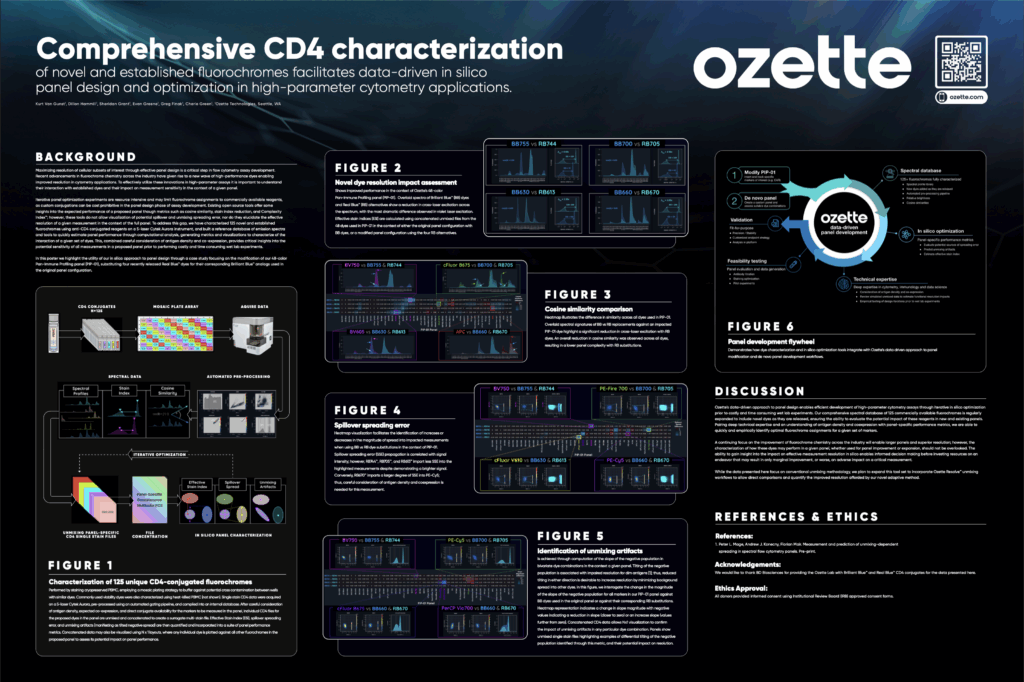
Ozette’s data-driven panel development strategy is highlighted through a case study incorporating novel high-performance dyes into our 48-color pan-immune profiling assay.
At CYTO2025, Ozette provided a detailed overview of our approach to data-driven panel design through CD4 characterization and computational performance metrics. The case study presented here demonstrates how we assessed the impact of replacing Brilliant BlueTM reagents with recently developed Real BlueTM reagents in the context of our 48-color PIP-01 assay.
Download Poster
Download Poster
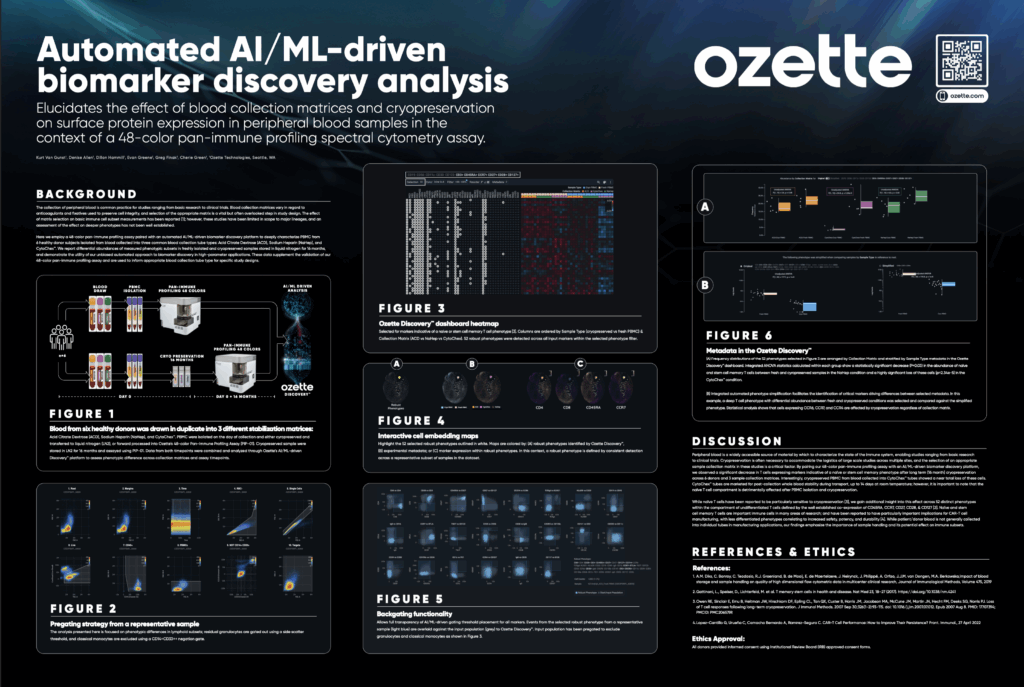
Ozette DiscoveryTM elucidates the effect of blood collection matrices and cryopreservation on phenotypic subset abundance.
At CYTO2025, Ozette demonstrated how our ML-driven DiscoveryTM platform was used to identify differential phenotypic abundances in fresh vs. cryopreserved PBMC from blood collected into three commonly used stabilization matrices as part of the supplemental validation of Ozette’s 48-color pan-immune profiling assay.
Download Poster
Download Poster
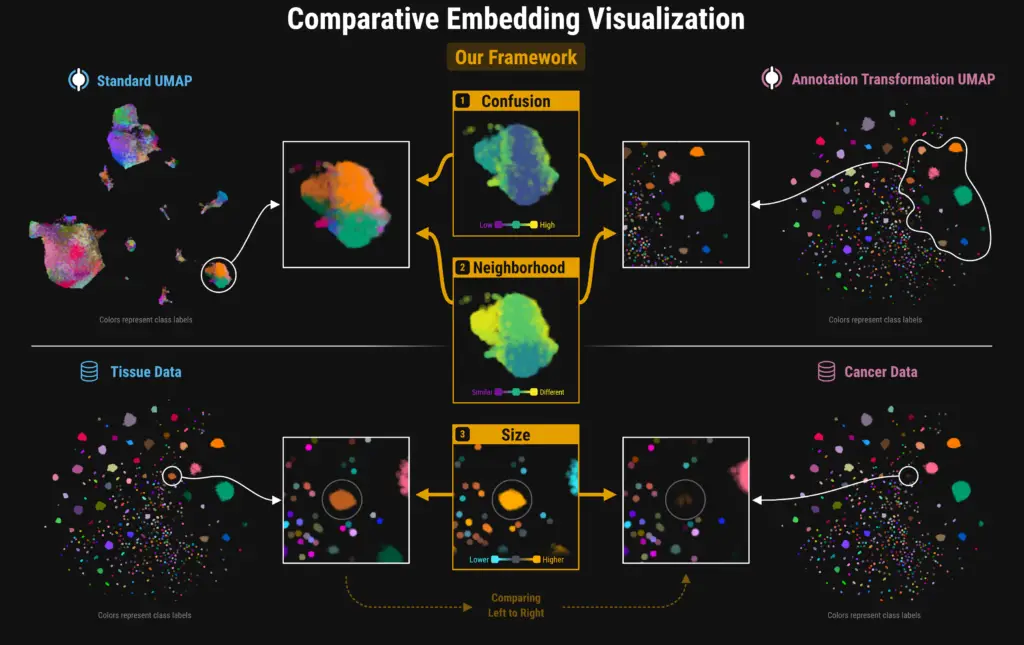
A General Framework for Comparing Embedding Visualizations Across Class-Label Hierarchies
At VIS 2024, Ozette’s former intern, Trevor Manz, presented work conducted in collaboration with Nils Gehlenborg’s lab at Harvard Medical School. The presentation outlined our work on a general framework for comparing embedding visualizations across class-label hierarchies. The paper is published in the IEEE TVCG journal. Ozette uses this methodology to identify and visualize meaningful compositional differences between two single-cell datasets.
View Publication
View Publication
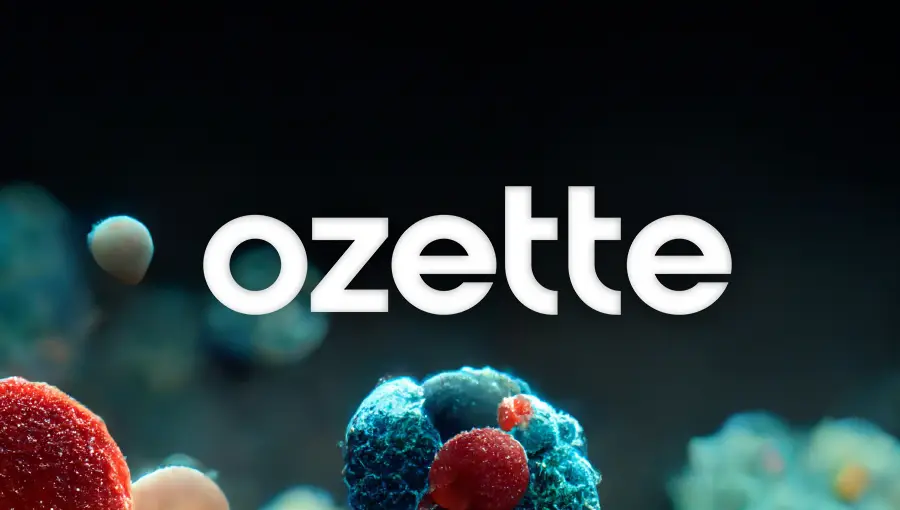
Pharmacodynamic and response biomarkers in the monotherapy arm of a phase 1 trial of CTX-471, a novel anti-CD137 agonist antibody
At SITC 2024, Ozette’s partner, Compass, presented findings from the monotherapy arm of their CTX-471 phase 1 trial. A novel anti-CD137 agonist antibody, CTX-471 treatment elicited changes consistent with increased anti-tumor immunity, including changes in natural killer cell activation status and tumor-specific expression of markers. These data identify potential biomarkers for selection of patients with a higher probability of responding to CTX-471 therapy. Read more here.
View Abstract Here
View Abstract Here
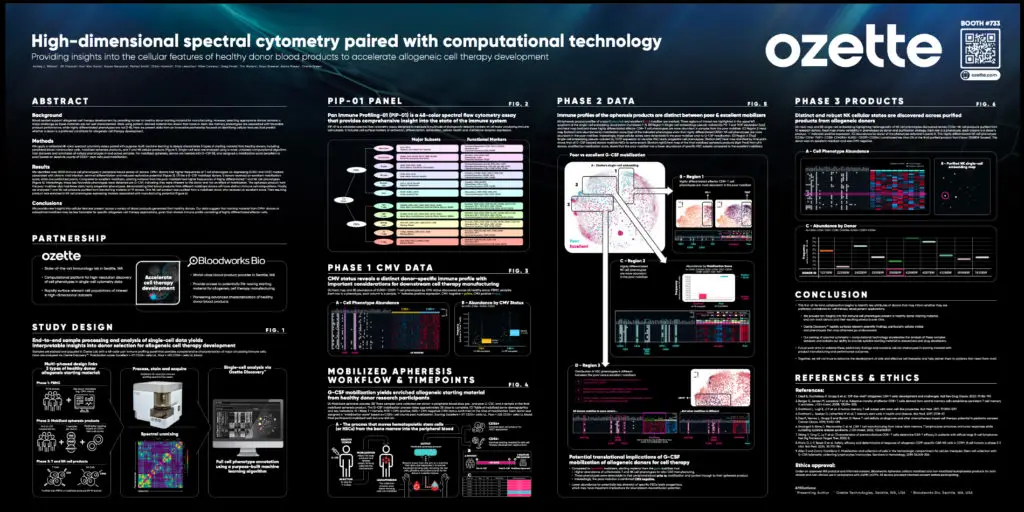
High-dimensional spectral cytometry paired with computational technology provides insights into the cellular features of healthy donor blood products to accelerate allogeneic cell therapy development
At SITC 2024, Ozette’s Head of Immunology, Ashley Wilson, presented how we use our 48-color spectral cytometry assay and AI-driven analysis platform to better identify optimal donors for allogeneic cell therapy. Analyzing immunophenotypes across different blood products from healthy donors, we found that donor characteristics, such as chronic viral infection and mobilization efficacy, can impact the suitability of blood products for allogeneic cell therapy development. Learn more by downloading the event poster here.
Download Poster
Download Poster
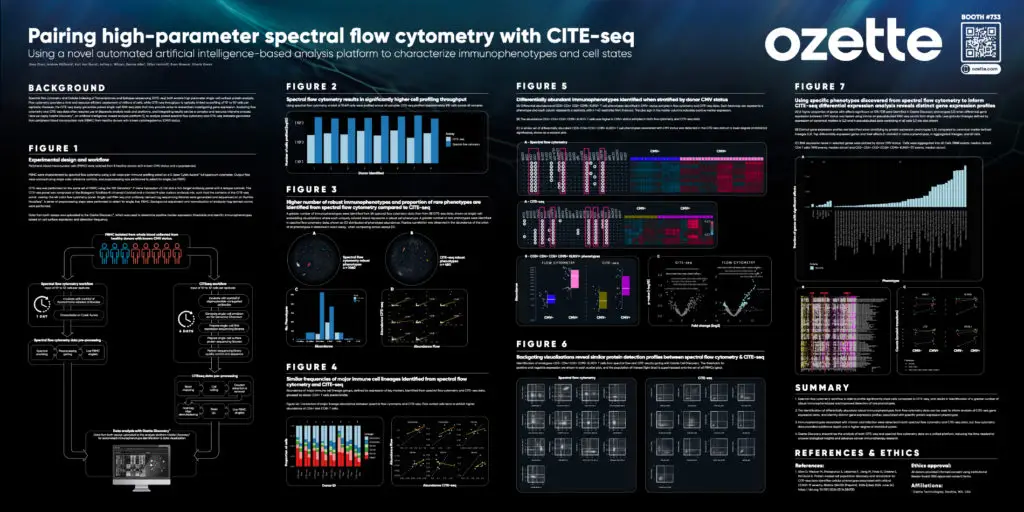
Pairing high-parameter spectral flow cytometry with CITE-seq using a novel automated artificial intelligence-based analysis platform to characterize immunophenotypes and cell states
At SITC 2024, Ozette’s Zoey Zhou presented how Ozette applied our AI-driven analysis platform to streamline the analysis of paired spectral flow cytometry and CITE-seq datasets and enhance immune cell profiling. By analyzing PBMC samples from healthy donors, we identified robust immunophenotypes to inform CITE-seq differential expression analysis, revealing distinct gene expression profiles associated with defined protein expression phenotypes. Download the event poster here to learn more.
Download Poster
Download Poster